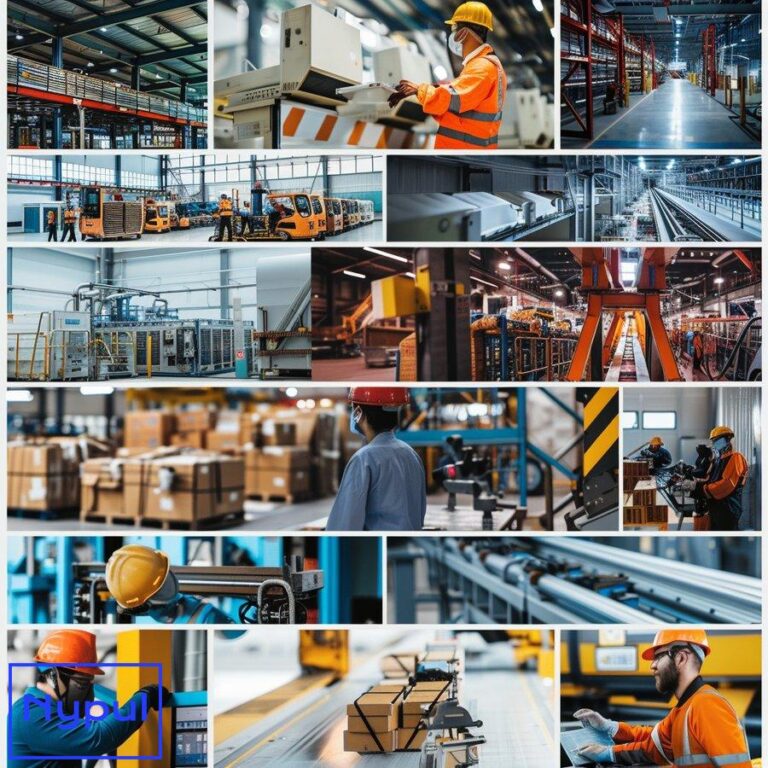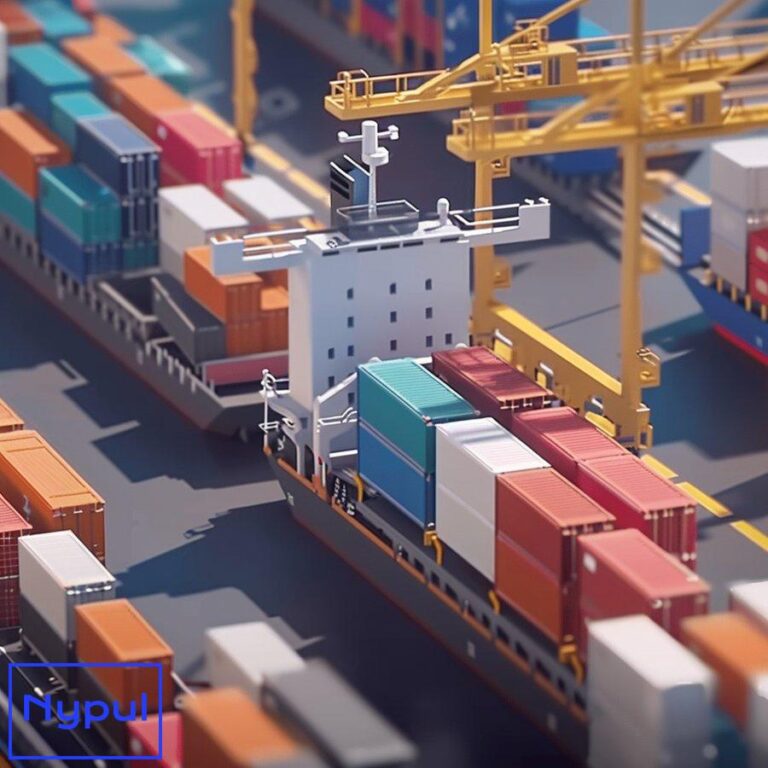What Is an Active Temperature Controlled Container
An active temperature controlled container is a specialized shipping unit designed to maintain precise internal temperatures for sensitive cargo during transportation. These containers utilize powered cooling and heating systems to regulate the internal environment, ensuring that temperature-sensitive goods remain within a specific temperature range throughout their journey.
Active temperature controlled containers differ from passive containers in that they have built-in mechanical or electrical systems that actively monitor and adjust the internal temperature. This active regulation allows for more precise control and longer-lasting temperature stability compared to passive solutions that rely solely on insulation and pre-cooled or pre-heated elements.
These containers are essential for industries that transport products requiring strict temperature control, such as pharmaceuticals, perishable foods, and certain chemicals. They provide a reliable solution for maintaining product integrity across various modes of transportation, including road, rail, sea, and air.
How Do Active Temperature Controlled Containers Work?

Active temperature controlled containers operate on a principle similar to that of a household refrigerator or air conditioning unit, but with more sophisticated controls and rugged construction suitable for transportation. The core functionality revolves around a closed-loop system that continuously monitors and adjusts the internal temperature.
Temperature Sensing and Control
At the heart of an active container’s operation is its temperature sensing and control system. Multiple temperature sensors are strategically placed within the container to provide accurate readings of the internal environment. These sensors feed data to a central control unit, which processes the information and determines whether heating or cooling is required to maintain the desired temperature range.
Cooling and Heating Mechanisms
The container uses a compressor-based refrigeration system for cooling. This system circulates refrigerant through a series of coils, removing heat from the interior of the container. For heating, electric heaters or heat pumps are employed to raise the temperature when necessary. The ability to both cool and heat allows these containers to maintain stable temperatures across a wide range of external conditions.
Power Supply
Active containers require a constant power supply to operate their temperature control systems. They can be plugged into external power sources during transport or at storage facilities. Many containers are also equipped with backup battery systems or can be connected to generator sets (gensets) to ensure continuous operation during power transitions or in areas where consistent external power is not available.
Airflow Management
Proper air circulation is crucial for maintaining uniform temperatures throughout the container. Fans and air ducts are strategically placed to ensure even distribution of cooled or heated air. This circulation helps prevent hot or cold spots that could compromise the integrity of the cargo.
Insulation
While the active systems do the bulk of the temperature regulation work, high-quality insulation is still a critical component. The walls, floor, and ceiling of the container are lined with thick, high-performance insulation materials to minimize heat transfer between the interior and exterior environments.
Monitoring and Logging
Advanced active containers are equipped with data logging systems that record temperature data, door openings, and other relevant information throughout the journey. This data can be accessed in real-time via telematics systems or downloaded upon arrival, providing a complete temperature history for quality assurance and regulatory compliance purposes.
Automated Defrost Cycles
To prevent ice buildup on cooling coils, which can reduce efficiency, active containers typically include automated defrost cycles. These cycles are carefully timed and controlled to ensure they do not impact the cargo temperature.
The combination of these systems allows active temperature controlled containers to maintain precise temperatures for extended periods, even in challenging external conditions. This level of control is essential for protecting high-value, temperature-sensitive goods during global transportation.
What Are the Key Components of an Active Temperature Controlled Container?
Active temperature controlled containers are complex systems comprised of several critical components working in harmony to maintain precise internal temperatures. Understanding these key components is essential for anyone involved in the logistics of temperature-sensitive goods. Here’s a detailed look at the primary elements that make up an active temperature controlled container:
Refrigeration Unit

The refrigeration unit is the core of the active temperature control system. It consists of:
- Compressor: Pressurizes the refrigerant, initiating the cooling cycle.
- Condenser: Releases heat from the refrigerant to the outside environment.
- Evaporator: Absorbs heat from the container’s interior, cooling the air.
- Expansion valve: Regulates the flow of refrigerant through the system.
This unit works continuously to remove heat from the container’s interior, maintaining the desired low temperature.
Heating System
For scenarios where warming is necessary, active containers include:
- Electric heaters: Provide direct heat when temperatures need to be raised.
- Heat pumps: In some advanced systems, the refrigeration cycle can be reversed to provide heating.
Temperature Sensors
Multiple temperature sensors are placed throughout the container to:
- Monitor air and product temperatures.
- Provide real-time data to the control system.
- Ensure uniform temperature distribution.
Control Unit
The control unit is the brain of the active container, responsible for:
- Processing data from temperature sensors.
- Activating cooling or heating systems as needed.
- Managing defrost cycles.
- Controlling fan speeds for air circulation.
- Logging temperature data and system operations.
Power System
To ensure continuous operation, the power system includes:
- External power connections for use during transport and storage.
- Backup batteries for short-term power during transitions.
- Compatibility with generator sets for extended off-grid operation.
Insulation
High-performance insulation materials line the container walls, floor, and ceiling to:
- Minimize heat transfer from the external environment.
- Enhance the efficiency of the temperature control systems.
- Maintain temperature stability during power interruptions.
Air Circulation System
Fans and air ducts work together to:
- Distribute cooled or heated air evenly throughout the container.
- Prevent temperature stratification.
- Ensure all cargo is maintained at the proper temperature.
Data Logging and Telematics
Advanced monitoring systems provide:
- Continuous recording of temperature data.
- Real-time alerts for temperature deviations or system malfunctions.
- GPS tracking for shipment location monitoring.
- Remote access to container performance data.
Door Seals and Gaskets
Specialized sealing systems are used to:
- Prevent air leakage when doors are closed.
- Maintain the integrity of the controlled environment.
- Minimize temperature fluctuations during loading and unloading.
Exterior Shell
The container’s outer structure is designed to:
- Protect internal components from physical damage.
- Withstand various weather conditions and handling stresses.
- Comply with international shipping standards for intermodal transport.
Understanding these components and their functions is crucial for proper operation, maintenance, and troubleshooting of active temperature controlled containers. Each element plays a vital role in ensuring that temperature-sensitive cargo remains within specified temperature ranges throughout the transportation process.
What Types of Active Temperature Controlled Containers Are Available?
Active temperature controlled containers come in various types and sizes to accommodate different cargo needs and transportation requirements. The diversity in container types ensures that shippers can select the most appropriate solution for their specific temperature-sensitive goods. Here’s an overview of the main types of active temperature controlled containers available in the market:

Standard Reefer Containers
These are the most common type of active temperature controlled containers. They are designed for general temperature-controlled cargo and offer:
- Temperature range typically from -30°C to +30°C (-22°F to +86°F).
- Available in 20-foot and 40-foot lengths.
- Suitable for sea, rail, and road transport.
- Used for a wide range of perishable goods, including fruits, vegetables, and frozen foods.
Deep Freeze Containers
Specialized containers for extremely low temperature requirements:
- Can maintain temperatures as low as -60°C (-76°F).
- Used for transporting items like certain pharmaceuticals, ice cream, and some seafood products.
- Often equipped with additional insulation and more powerful refrigeration units.
Multi-Temperature Containers
These containers feature multiple compartments with independent temperature controls:
- Allow transportation of goods requiring different temperature ranges in a single container.
- Typically have two or three separate zones.
- Useful for mixed loads of chilled and frozen products.
Controlled Atmosphere Containers
In addition to temperature control, these containers regulate the atmosphere inside:
- Can adjust levels of oxygen, carbon dioxide, and nitrogen.
- Used for extending the shelf life of fresh produce during long transits.
- Help maintain product quality by slowing ripening processes.
Pharmaceutical-Grade Containers
Designed specifically for the stringent requirements of pharmaceutical transport:
- Offer precise temperature control, often within ±0.5°C of the set point.
- Feature enhanced monitoring and data logging capabilities.
- Meet Good Distribution Practice (GDP) guidelines for pharmaceutical products.
Air Cargo Containers
Specialized units designed for air freight:
- Lightweight construction to meet airline weight restrictions.
- Shaped to fit aircraft cargo holds efficiently.
- Often feature faster temperature pull-down capabilities due to shorter transit times in air transport.
Pallet-Sized Active Containers
Smaller units designed for less-than-container load (LCL) shipments:
- Can be handled with standard forklifts and pallet jacks.
- Ideal for smaller shipments or high-value goods.
- Often used in intermodal transport scenarios.
Cryogenic Containers
Ultra-low temperature containers for specialized cargo:
- Can maintain temperatures below -150°C (-238°F).
- Used for transporting biological samples, certain chemicals, and superconducting materials.
- Often utilize liquid nitrogen or other cryogenic coolants.
Bulk Liquid Containers
Active temperature controlled tanks for liquid cargo:
- Used for temperature-sensitive liquids like fruit juices, liquid dairy products, and some chemicals.
- Feature integrated heating or cooling systems to maintain product consistency.
Modular Active Containers
Flexible systems that can be installed in standard dry containers:
- Allow for temporary conversion of regular containers into temperature-controlled units.
- Useful for seasonal demands or specialized shipments.
Here’s a comparison table of some common types of active temperature controlled containers:
| Container Type | Temperature Range | Typical Uses | Special Features |
|---|---|---|---|
| Standard Reefer | -30°C to +30°C | General perishables | Versatile, widely available |
| Deep Freeze | Down to -60°C | Ultra-low temp products | Enhanced insulation |
| Multi-Temperature | Varies by compartment | Mixed temperature loads | Multiple independent zones |
| Controlled Atmosphere | -30°C to +30°C | Fresh produce | Atmosphere regulation |
| Pharmaceutical-Grade | Precise ±0.5°C control | Medicines, vaccines | GDP compliant, enhanced monitoring |
| Air Cargo | -20°C to +20°C | Time-sensitive goods | Lightweight, aircraft compatible |
| Pallet-Sized | -20°C to +20°C | Small shipments, high-value goods | Easily handled, intermodal friendly |
The availability of these diverse container types allows shippers to tailor their choice to the specific needs of their cargo, ensuring optimal conditions throughout the transportation process. When selecting an active temperature controlled container, factors such as cargo type, required temperature range, shipment size, mode of transport, and regulatory compliance must all be considered to choose the most appropriate solution.
Which Industries Rely on Active Temperature Controlled Containers?

Active temperature controlled containers play a crucial role in various industries where maintaining specific temperature ranges during transportation is essential for product quality, safety, and efficacy. These specialized containers have become indispensable in global supply chains, enabling the safe transport of temperature-sensitive goods across long distances and varying climate conditions. Here are the primary industries that heavily rely on active temperature controlled containers:
Pharmaceutical Industry
The pharmaceutical sector is perhaps the most demanding user of active temperature controlled containers:
- Vaccines, biologics, and many medications require strict temperature control to maintain efficacy.
- Clinical trial materials often need precise temperature management during distribution.
- Compliance with Good Distribution Practice (GDP) regulations necessitates reliable temperature control and monitoring.
- Cold chain requirements range from controlled room temperature (20-25°C) to deep freeze (-70°C) for certain vaccines.
Food and Beverage Industry
Perishable foods and beverages require temperature control to maintain freshness and prevent spoilage:
- Fresh produce, meats, and dairy products are transported at refrigerated temperatures.
- Frozen foods must maintain sub-zero temperatures to prevent thawing and refreezing.
- Certain beverages, like fine wines, require specific temperature ranges to preserve quality.
- Processed foods often have temperature requirements to maintain texture and prevent bacterial growth.
Biotechnology and Life Sciences
The biotech industry relies on temperature-controlled logistics for various materials:
- Living cell cultures and tissue samples require precise temperature maintenance.
- Enzymes and proteins can degrade if not kept at specific temperatures.
- Research materials often need to be transported at ultra-low temperatures.
Chemical Industry
Many chemicals are temperature-sensitive and require controlled environments during transport:
- Certain industrial chemicals may become unstable or react at high temperatures.
- Some adhesives and resins require cooling to prevent premature curing.
- Specialty chemicals often have narrow temperature ranges for maintaining their properties.
Electronics and Semiconductor Industry
Sensitive electronic components can be affected by temperature extremes:
- Certain electronic materials and components are sensitive to heat and humidity.
- Lithium batteries have specific temperature requirements for safe transport.
- Precision instruments may require stable temperatures to prevent calibration issues.
Aerospace and Defense
Specialized equipment and materials in this sector often need temperature control:
- Composite materials used in aircraft construction can be temperature-sensitive.
- Certain military supplies, including some explosives and propellants, require temperature stability.
- Satellite components and other high-tech equipment often need precise environmental control.
Horticulture and Floriculture
Live plants and cut flowers have specific temperature needs:
- Cut flowers require cool temperatures to maintain freshness and extend vase life.
- Live plants need controlled environments to prevent stress and maintain health during transport.
- Seeds and bulbs often have specific temperature requirements to maintain viability.
Fine Art and Antiquities
Valuable artworks and historical artifacts often require careful temperature control:
- Paintings and sculptures can be sensitive to temperature fluctuations.
- Ancient artifacts may require stable environments to prevent degradation.
- Museums and galleries use temperature-controlled transport for traveling exhibitions.
Cosmetics and Personal Care Products
Many cosmetic formulations are temperature-sensitive:
- Certain creams and lotions can separate or degrade if exposed to high temperatures.
- Some active ingredients in skincare products lose efficacy outside specific temperature ranges.
- Makeup products like lipsticks can melt or change consistency in high heat.
Specialty Food Products
Gourmet and artisanal food items often require precise temperature control:
- Premium chocolates need cool, stable temperatures to maintain texture and appearance.
- Certain cheeses require specific temperature and humidity levels during aging and transport.
- Caviar and other luxury seafood products demand precise refrigeration.
Here’s a table summarizing the temperature requirements for various industries:
| Industry | Common Temperature Ranges | Example Products |
|---|---|---|
| Pharmaceuticals | 2°C to 8°C, -20°C, -70°C | Vaccines, insulin, biologics |
| Food & Beverage | -18°C to 4°C | Frozen foods, fresh produce, dairy |
| Biotechnology | -150°C to 37°C | Cell cultures, enzymes, blood samples |
| Chemicals | Varies widely | Adhesives, specialty polymers |
| Electronics | 10°C to 27°C | Semiconductors, batteries |
| Horticulture | 0°C to 10°C | Cut flowers, live plants |
| Fine Art | 18°C to 21°C | Paintings, sculptures |
| Cosmetics | 15°C to 25°C | Creams, makeup, perfumes |
The reliance on active temperature controlled containers across these diverse industries underscores the critical role of temperature management in modern logistics. As global trade continues to expand and supply chains become more complex, the demand for sophisticated temperature control solutions is likely to grow, driving further innovations in active container technology.
What Are the Advantages of Using Active Temperature Controlled Containers?
Active temperature controlled containers offer numerous advantages over passive systems and traditional shipping methods for temperature-sensitive cargo. These benefits make them indispensable for many industries and contribute to the integrity and safety of transported goods. Here are the primary advantages of using active temperature controlled containers:
Precise Temperature Control
Active containers provide superior temperature regulation:
- Maintain temperatures within narrow ranges, often within ±0.5°C of the set point.
- Quickly respond to external temperature changes or internal heat loads.
- Offer the ability to set exact temperatures rather than broad ranges.
This precision is crucial for pharmaceuticals, sensitive electronics, and certain food products where even small temperature deviations can compromise quality or safety.
Extended Temperature Hold Times
Unlike passive systems, active containers can maintain temperatures indefinitely:
- As long as power is supplied, the desired temperature can be maintained for weeks or months.
- Ideal for long-distance transportation or extended storage periods.
- Reduce the risk of temperature excursions during unexpected delays or route changes.
Versatility in Temperature RangesVersatility in Temperature Ranges**
Active containers offer a wide range of temperature settings:
- Can accommodate temperatures from deep freeze (-60°C) to warm (30°C+).
- Allow for temperature adjustments during transit if cargo requirements change.
- Suitable for various products with different temperature needs in a single container type.
Real-Time Monitoring and Data Logging
Advanced active containers provide comprehensive monitoring capabilities:
- Continuous temperature recording throughout the journey.
- Real-time alerts for any temperature deviations or system malfunctions.
- GPS tracking for shipment location monitoring.
- Data logs for quality assurance and regulatory compliance.
This level of monitoring ensures product integrity and provides valuable data for supply chain optimization.
Reduced Product Loss and Improved Quality
By maintaining optimal temperatures, active containers help:
- Minimize spoilage of perishable goods.
- Preserve the efficacy of temperature-sensitive pharmaceuticals.
- Maintain the quality and shelf life of various products.
- Reduce the risk of temperature-related damage or degradation.
Cost-Effectiveness for High-Value or Sensitive Cargo
While initial costs may be higher, active containers can be more economical for certain shipments:
- Reduce the need for temperature-stabilizing packaging materials.
- Lower insurance costs due to decreased risk of temperature excursions.
- Minimize product loss, which is particularly important for high-value goods.
Environmental Control Beyond Temperature
Some advanced active containers offer additional environmental controls:
- Humidity regulation to prevent moisture-related issues.
- Controlled atmosphere capabilities for fresh produce.
- Vibration dampening for sensitive equipment or fragile items.
Flexibility in Transportation Modes
Active containers can be used across various transportation methods:
- Compatible with sea, air, rail, and road transport.
- Allow for intermodal transportation without breaking the cold chain.
- Reduce the need for specialized vehicles or storage facilities at transfer points.
Compliance with Regulatory Requirements
Active containers help meet strict regulatory standards:
- Assist in compliance with Good Distribution Practice (GDP) for pharmaceuticals.
- Provide necessary documentation for temperature-sensitive food transport.
- Meet international shipping regulations for various controlled substances.
Scalability for Different Cargo Sizes
Active containers come in various sizes to accommodate different shipment volumes:
- Available in standard 20-foot and 40-foot sizes for large shipments.
- Smaller, pallet-sized units for partial loads or high-value small shipments.
- Modular systems that can be installed in standard containers for flexible capacity.
Enhanced Security Features
Many active containers include advanced security measures:
- Electronic locks and access controls.
- Tamper-evident seals and real-time breach notifications.
- Integration with supply chain security systems.
These features are particularly valuable for high-value or sensitive cargo.
What Challenges Are Associated with Active Temperature Controlled Containers?
While active temperature controlled containers offer numerous benefits, they also present several challenges that users must navigate. Understanding these challenges is crucial for effective implementation and management of temperature-controlled logistics. Here are the primary challenges associated with active temperature controlled containers:
High Initial and Operational Costs
Active containers represent a significant investment:
- Purchase prices are substantially higher than standard containers.
- Operational costs include power consumption and specialized maintenance.
- Training for proper use and maintenance adds to overall expenses.
These costs can be prohibitive for smaller companies or infrequent shippers.
Power Supply Dependencies
Continuous operation relies on consistent power supply:
- Requires access to power sources during transport and at transfer points.
- Risk of temperature excursions during power transitions or failures.
- Need for backup power systems or generator sets adds complexity and cost.
Maintenance and Repair Complexities
Active containers have sophisticated systems requiring specialized care:
- Regular maintenance is crucial to ensure reliable operation.
- Repairs often require specialized technicians, which may not be available in all locations.
- Downtime for maintenance or repairs can disrupt shipping schedules.
Weight and Space Considerations
The additional components in active containers impact logistics:
- Heavier than standard containers, potentially affecting transport costs and fuel efficiency.
- Refrigeration units reduce available cargo space.
- May require special handling equipment due to weight and dimensions.
Technical Failures and Malfunctions
Complex systems are prone to occasional failures:
- Refrigeration unit breakdowns can jeopardize entire shipments.
- Sensor or control system errors may lead to temperature deviations.
- Software glitches in monitoring systems can result in data loss or inaccuracies.
Environmental Impact
Active containers have a larger carbon footprint:
- High energy consumption contributes to increased CO2 emissions.
- Refrigerants used in cooling systems can have significant global warming potential if leaked.
- Disposal of outdated units presents environmental challenges.
Regulatory Compliance Complexities
Meeting diverse regulatory requirements can be challenging:
- Different countries may have varying standards for temperature-controlled transport.
- Compliance documentation and temperature logging must meet strict criteria.
- Regulations may change, requiring updates to equipment or procedures.
Training and Human Error
Proper operation requires specialized knowledge:
- Staff must be trained in container operation, monitoring, and troubleshooting.
- Human error in setting temperatures or managing systems can lead to cargo damage.
- Continuous training is necessary to keep up with technological advancements.
Intermodal Transfer Risks
Maintaining temperature control during transfers between transport modes is challenging:
- Risk of temperature excursions during loading and unloading processes.
- Coordination required between different transport providers to ensure continuous power supply.
- Potential for delays at transfer points can impact temperature stability.
Limited Availability in Certain Regions
Access to active containers and support services varies globally:
- May be scarce in developing regions or remote areas.
- Uneven distribution can lead to repositioning costs and logistical challenges.
- Limited availability can impact shipping schedules and routes.
Data Management and Privacy Concerns
Advanced monitoring systems generate large amounts of data:
- Proper data storage, analysis, and security measures are necessary.
- Privacy concerns arise when tracking systems collect sensitive information.
- Integration with various IT systems across the supply chain can be complex.
Overcooling or Overheating Risks
Precise temperature control can sometimes lead to unintended consequences:
- Risk of freezing products that are sensitive to low temperatures.
- Potential for condensation formation during temperature fluctuations.
- Challenges in maintaining uniform temperatures throughout the container.
Customs and Border Control Delays
Temperature-sensitive cargo may face additional scrutiny:
- Inspections can lead to container opening, risking temperature excursions.
- Delays in customs clearance can impact the viability of perishable goods.
- Documentation requirements for temperature-controlled shipments may be more stringent.
Adapting to Product-Specific Requirements
Different products often have unique temperature needs:
- Challenges in configuring containers for multi-product shipments with varying requirements.
- Need for specialized knowledge about product-specific temperature sensitivities.
- Potential for conflicts when consolidating shipments with different temperature needs.
To address these challenges, companies using active temperature controlled containers must:
- Invest in thorough staff training and education programs.
- Implement robust maintenance and quality control procedures.
- Develop contingency plans for potential failures or disruptions.
- Stay informed about regulatory changes and technological advancements.
- Collaborate closely with logistics partners to ensure seamless temperature-controlled supply chains.
- Consider the total cost of ownership when evaluating the use of active containers.
- Explore innovative solutions such as renewable energy sources for powering containers.
- Implement comprehensive data management and security protocols.
By acknowledging and proactively addressing these challenges, businesses can maximize the benefits of active temperature controlled containers while minimizing risks and operational difficulties. As technology continues to advance, many of these challenges are likely to be mitigated through innovations in container design, monitoring systems, and logistics processes.





